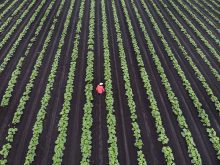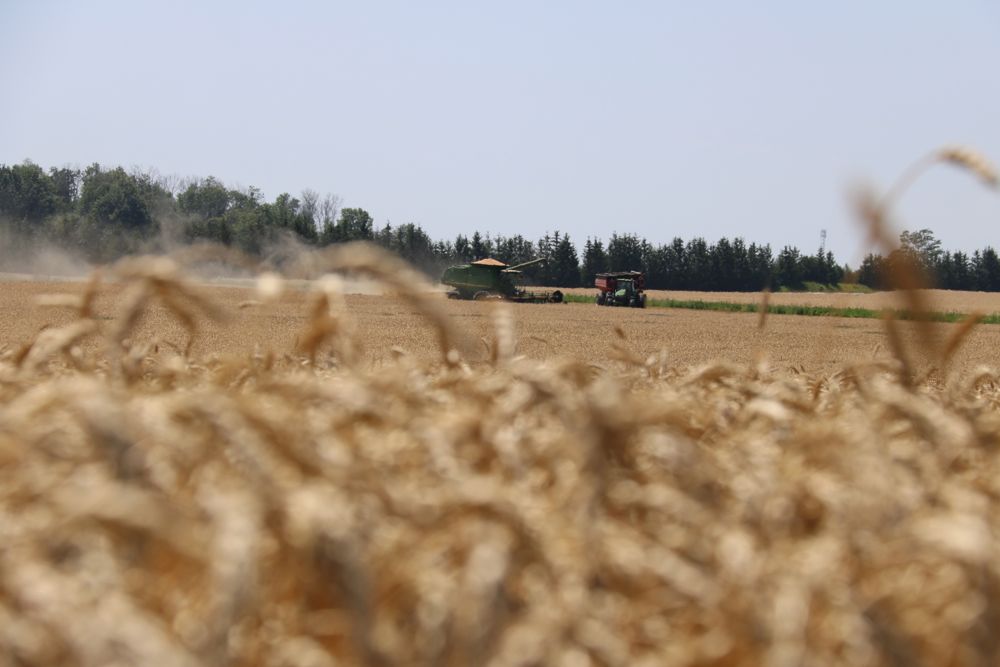In seed treatments, it seems we’ve come a hundred miles in just a decade. Truth is, there’s another thousand we’re soon going to go
From Dividend to Poncho to CruiserMaxx Beans — and then back full circle to CruiserMaxx Cereals with myriad treatments in between — seed treatments have evolved into standard operating procedure in Eastern Canada.
But as with the seed traits sector, growers are demanding more breakthroughs every year, and seed treatment developers are having to delve into newer technologies including inoculants and other biologicals just to keep pace.
The term “seed treatment” itself is something of a catch-all. A generation ago, it meant treating seed with a fungicide to manage disease, or putting a first-generation powder down with the corn to control wireworm after sod.
Read Also

Could crop sharing be a viable option for your farm?
Crop sharing could be a good option for young and beginning farmers.
Then new seed-applied insecticides started coming to the market to combat increasing insect populations, plus new formulations, new application strategies and new targets — including in-season threats.
“Now an insecticide-fungicide combination is becoming the norm for soybeans, corn and wheat,” says Albert Tenuta, field crops pathologist with the Ontario Agriculture Ministry. “The term ‘seed treatment’ depends on what the purpose is. Is it a pest management issue, such as managing diseases or insects? Is it a nematicide, or are you trying to increase nitrogen availability or production through inoculants?”
Tenuta has been working with a range of researchers, agencies and private-sector companies in the past few years. Although much of that work has been focused on nematicides, his links with colleagues in 12 U.S. states, as well as those with Agriculture and Agri-Food Canada, the Grain Farmers of Ontario and the University of Guelph, have provided him with insight on the future for seed treatments.
In a word, Tenuta expects we’ll soon see “stacked” seed treatments, including insecticides and fungicide pairings combined with a nematicide and offered as a combination treatment.
“There’s going to be a lot of learning, and it’ll be an excellent opportunity,” says Tenuta. “I believe seed treatments on the whole are going to go through a significant transition.”
Make the transition
David Townsend points to inoculants and other biologicals, where stacking is already happening, and he says there’s plenty more to come.
“We already biostack inoculants — with Bacillus subtilis plus Bradyrhizobium japonicum, and we will continue. That’s the goal over the next five to seven years, to keep adding to those,” says Townsend, product manager for Becker Underwood. “We’re testing new biologicals all the time, and it takes about two years to get to market with those. Near term, we’re working on things for registration, but it’ll be a continual biostack from then on.”
The real challenge with inoculants and biologicals is that they are living organisms, not chemical formulations. How these bacteria interact not only with the seed but with an insecticide or fungicide partner has to be researched long before the combination is registered with either the Pest Management Regulatory Agency (PMRA) or the Canadian Food Inspection Agency (CFIA).
Townsend explains that a company seeking to register an inoculant for a stacked-treatment application must show that a product provides a benefit to the plant on its own, while also creating a synergistic effect with other chemicals or biologicals.
“The product has to be proved to do something, rather than just throwing this type of biological stew at a plant,” says Townsend. “You don’t want that approach because we do have to know if it’s actually doing something on its own.”
Of course, one of the other challenges with seed treatments is the delivery method. So-called “dust-offs” have become the most common complaint associated with seed treatments, where coverage can be diminished so field performance is hurt, or where the dust can become a nuisance or even a health issue for anyone working with the seed. Trying to reduce that problem is driving the use of polymers.
Polymers might do more, however. “With polymers, we’re working on another way we can formulate some of these bacteria and biologicals so that they’re not sitting in the same medium,” says Townsend. “We’re also working on ways of improving the flowability and making sure that we can get the product on easy.”
The bad guys are smarter too
The other developing trend taking shape in seed treatments is a shift in addressing specific pests and specific diseases. In the past, seed treatments and fungicides carried a “broad-spectrum” approach to control, attempting to tackle as many different disease pathogens (or pests) as possible. But times have changed, and some pathogens have either developed tolerance to the old rates of an active ingredient, or their populations have increased, necessitating a higher application rate.
“But another way to deal with this is to target those pathogens directly, so for example we’re starting to see a lot of the companies looking at rhizoctonia and fusarium control,” says Tenuta. From a genetic standpoint, there simply isn’t a good level of resistance or tolerance to the rhizoctonia and fusarium root rots in the bean varieties that growers can buy in Eastern Canada.
A weakness on the genetic side, however, is being seen as an opportunity to demonstrate strength on the seed treatment side, particularly because seed treatments may offer a better chance for broader-spectrum control.
This could be of particular assistance because it can be so difficult for growers to know what diseases they’re vulnerable to early in the season. It can take a microscope to identify the physical differences in the damping off or root rot diseases, including rhizoctonia, fusarium, pythium and phytophthora.
“And with fusarium, for instance, you not only have the root rot component of it, whether it is occurring early and late season, but in the case of fusarium and other fungal pathogens, they may colonize the soybean root but not really cause disease,” says Tenuta. “They’ll develop and multiply, and may go unnoticed.” Such latent infections on one crop may then act as a bridge, increasing the risk of disease in subsequent crops.
Another reason for targeting more than one pathogen is the similarities that exist between diseases, particularly pythium and phytophthora. Both are considered water moulds yet they share very unique environmental and growth properties. In the past, one way to differentiate the two would be based on growing seasons and the temperatures at which they grew. In many cases, pythium would flourish under cool, wet conditions early in the season. However, once the temperatures rose above 20 C, the pathogen would slow down in its growth and development. Phytophthora, on the other hand, was more heat tolerant.
“What we’re starting to see now is that the pythium has adapted to that, and now it becomes more tolerant of heat, as well,” says Tenuta. “So the impact of pythium is being extended further into the season.”
Still, Tenuta repeats the message that he says everyone should remember. Pathogens are living organisms, he says, and over time they always adapt and in effect get “smarter.”
“If we had this conversation in the 1950s or ’60s, we might be talking about one or two different races of phytophthora,” says Tenuta. “Now, we’re at 80 to 100 or more, so the trick for us, from a pest management standpoint and from a breeding standpoint, is to be smarter than they are.” CG















